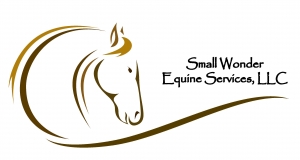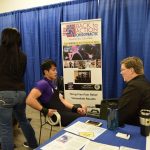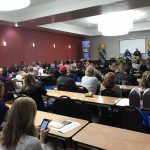Another modality Romans uses is a vibration plate. Touted to do everything from promoting circulation, bone density and muscle mass to reducing swelling, inflammation and injuries, the plate isn’t much to look at.
The horse steps up onto two large rectangles that are pushed together, and is asked to stand while the machine is turned on, causing the entire apparatus to vibrate. On this machine, like the Magna Wave, the intensity can vary. The plate is also believed to improve joint health, prevent bucked shins, improve under-run heels and thin soles, and speed healing of fractures.
Romans said that his horses don’t mind stepping up on to the plate and seem to anticipate the comfort it provides.
“After they’ve been on it about 10 seconds, they all want to stand on it,” the trainer said.
As the plate is supposed to build bone density, Romans puts his 2-year-olds, as well as his seasoned racehorses, on it daily.
While still not as mainstream as traditional Western medicine like Bute and Banamine, alternative therapies are gaining traction on backstretches and in training barns across the country. Though many don’t have years of scientific research backing them, Romans sums it up well: “At the least of it, it makes them happy–so they’re happy, and I am happy.”
Dr. Martha Rodgers of Shephard Hill Equine in Lexington, Ky. believes Romans is on the right track.
“The horses do feel better alternative therapies like the Magna Wave and the vibration plate (he isn’t imagining that!) and it increases circulation at the cellular level,” said Rodgers. “Used appropriately, complementary therapies can only benefit the horse.”
Rodgers believes that in a future with fewer medications available to trainers, natural healing modalities may provide horsemen with an acceptable alternative.
Rodgers cautions that trainers should work closely with a veterinarian if using technology like the vibration plate or Magna Wave to help a horse heal from a serious injury.
by Sarah Coleman | 05.01.2015 | 4:53pm
Copyright © 2017 Paulick Report.


 With scrutiny of medications in racehorses at an all-time high, it’s no wonder that some trainers are turning to alternative therapies to keep their charges in tip-top shape.
With scrutiny of medications in racehorses at an all-time high, it’s no wonder that some trainers are turning to alternative therapies to keep their charges in tip-top shape.


